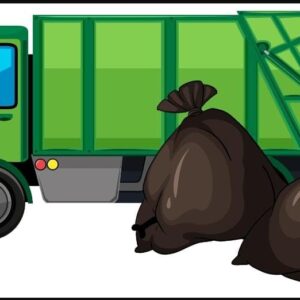Fuel is one of the most significant operating expenses for modern farms. Whether you’re running tractors, harvesters, irrigation systems, or generators, agricultural fuel powers productivity. But with rising fuel prices and increasing environmental concerns, wasting fuel isn’t just costly—it’s unsustainable. Reducing fuel waste on your farm can save money, increase efficiency, and support eco-friendly farming.
1. Conduct a Full Fuel Audit
The first step in reducing fuel waste is understanding how much you’re currently using—and where it’s going. A fuel audit evaluates:
-
Fuel deliveries vs. fuel usage
-
Usage by equipment and machinery
-
Idle time and maintenance schedules
-
Storage losses and leaks
By identifying inconsistencies or overuse, you gain clarity on where savings can be made. Use telematics systems or fuel monitoring software to track usage with precision.
2. Invest in Modern, Fuel-Efficient Machinery
Older tractors and harvesters tend to be less fuel-efficient due to outdated engines and wear over time. While new machinery may seem costly upfront, many modern models are designed with:
-
Fuel-saving technologies
-
Improved engine efficiency
-
Optimised transmission systems
Look for machinery that meets Tier 4 or Stage V emissions standards, which not only consume less fuel but also reduce harmful emissions.
3. Maintain Equipment Regularly
A well-maintained engine runs more efficiently and uses less fuel. Routine maintenance should include:
-
Changing air and fuel filters
-
Keeping tyres inflated to the recommended pressure
-
Checking for fuel leaks or blockages
-
Servicing engines according to the manufacturer’s schedule
Neglecting maintenance can increase fuel consumption by up to 10–15%. Create a maintenance calendar and stick to it.
4. Optimise Field Operations and Travel Routes
Fuel waste often comes from inefficient fieldwork and unnecessary travel. Optimise your field operations by:
-
Using GPS-guided machinery to reduce overlap and missed areas
-
Planning field routes to minimise turning and travel time
-
Combining tasks where possible (e.g., fertilising and planting)
Minimising double work can result in significant fuel savings over a season.
5. Reduce Machinery Idling Time
Idling wastes fuel and adds wear to the engine. If your tractor or harvester is idling for more than a minute or two without work, shut it down. Some practical strategies include:
-
Using automatic idle shutdown systems
-
Training staff on fuel-conscious driving behaviours
-
Scheduling breaks to minimise idle periods
Even reducing idle time by 30 minutes a day can save hundreds of litres over a season.
6. Improve Fuel Storage and Handling
Fuel can be wasted through evaporation, contamination, and spills. To prevent losses:
-
Use bunded (double-walled) fuel tanks
-
Store fuel in cool, shaded areas to reduce evaporation
-
Install filters and water separators to maintain fuel quality
-
Train staff on safe fuel handling practices
Secure storage also reduces the risk of theft—a common but often overlooked cause of fuel loss.
7. Switch to Cleaner Alternatives When Practical
Hydrotreated Vegetable Oil (HVO) and biodiesel are renewable diesel alternatives that can sometimes improve combustion efficiency and reduce carbon emissions. While not always cheaper per litre, they may reduce long-term engine wear and qualify for environmental grants or incentives.
If you’re using older machinery, always consult your manufacturer before switching fuel types.
8. Train Your Team for Fuel Efficiency
Fuel-saving strategies are only as effective as the people implementing them. Regular training ensures your team:
-
Understands efficient driving techniques
-
Knows how to operate equipment correctly
-
Follows maintenance and refuelling protocols
Encourage staff to report inefficient practices and reward fuel-saving behaviours to create a culture of responsibility.
9. Utilise Precision Agriculture Technologies
Precision farming tools reduce fuel waste by enabling smarter decision-making. These tools include:
-
Soil sensors for targeted fertiliser applications
-
Drones for crop monitoring
-
Automated irrigation systems
By applying inputs only where needed, you reduce the number of machinery passes across the field, cutting down fuel use.
10. Monitor and Benchmark Your Progress
Finally, track your fuel-saving efforts over time. Keep monthly logs of:
-
Fuel usage per activity or hectare
-
Cost savings from reduced consumption
-
Improvements in efficiency per equipment
Compare this data year-on-year to benchmark your progress and identify areas for further optimisation.
Final Thoughts
Reducing agricultural fuel waste isn’t about making one big change—it’s about combining several small, practical steps. From audits and equipment upgrades to smarter storage and staff training, every tweak adds up. Not only will you reduce costs and increase productivity, but you’ll also contribute to a more sustainable farming future.
Implementing these strategies can give your farm a competitive edge while preserving resources for generations to come. Now is the perfect time to take control of your fuel consumption and make every drop count.



